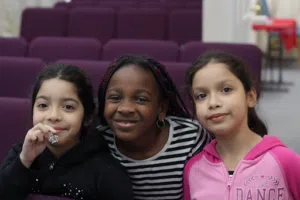Tips for Planning Engaging Educational Activities: Education doesn’t have to be confined to textbooks and lectures. Engaging in educational activities that combine learning with fun can transform how students approach new concepts and ideas. Whether you’re an educator, a parent, or a mentor, creating interactive experiences can spark curiosity, enhance retention, and foster a love for learning. Here’s how you can make education enjoyable while maintaining its value and purpose.
Contents
- 1 Incorporating Games into the Learning Process
- 2 Encouraging Hands-On Activities
- 3 Integrating Technology for Interactive Learning
- 4 Tapping Into Students’ Interests
- 5 Encouraging Group Collaboration
- 6 Introducing Storytelling as a Teaching Tool
- 7 Offering Choices and Autonomy
- 8 Celebrating Achievements and Progress
Incorporating Games into the Learning Process
Games are a powerful way to make learning enjoyable. They encourage participation, collaboration, and a healthy sense of competition. Educational games can be tailored to specific topics or skills, ensuring that students remain focused while having fun.
From math puzzles to vocabulary challenges, games appeal to a wide range of interests and age groups. For instance, tools like a lucky wheel can add an exciting element of chance to quizzes or group activities. By spinning the wheel to determine questions, rewards, or team tasks, you can keep participants engaged and eager to participate. Incorporating such elements makes the learning process feel less like work and more like play, encouraging students to engage actively.
Encouraging Hands-On Activities
Hands-on learning fosters a deeper understanding of concepts by allowing students to experience them directly. This approach is particularly effective for science, technology, engineering, and mathematics (STEM) subjects. Activities like building models, conducting experiments, or crafting projects bring abstract ideas to life, making them more tangible and relatable.
Incorporating hands-on activities into lessons also encourages creativity and critical thinking. For instance, instead of teaching physics concepts through lectures, challenge students to design and test their own structures or machines. This interactive approach helps them connect theoretical knowledge with real-world applications, boosting both comprehension and interest.
Integrating Technology for Interactive Learning
Technology offers endless possibilities for creating dynamic educational experiences. From virtual reality simulations to interactive apps, digital tools can cater to different learning styles and preferences. For visual learners, animations and videos break down complex topics into digestible visuals. For auditory learners, podcasts and narrated tutorials can provide an engaging way to absorb information.
Interactive platforms like Kahoot or Quizizz allow educators to create custom quizzes and activities that students can participate in from their devices. These tools gamify the learning process, making it more engaging while providing real-time feedback that helps students track their progress.
Tapping Into Students’ Interests
One of the most effective ways to make learning enjoyable is by aligning activities with students’ personal interests. When students see a connection between what they’re learning and their passions, they’re more likely to engage and retain information. For example, if a student loves music, incorporate rhythm and song into language lessons or math exercises.
Similarly, if students are interested in sports, design activities that incorporate athletic themes. For instance, a geography lesson could involve mapping out famous stadiums, or a science class could explore the physics of a basketball shot. By personalizing lessons to suit their interests, you show students that learning is relevant to their lives.
Encouraging Group Collaboration
Collaborative activities not only make learning fun but also teach essential teamwork and communication skills. Group projects, debates, and problem-solving challenges foster a sense of community and shared purpose. When students work together, they’re more likely to stay motivated and support each other in understanding complex ideas.
To make group activities more engaging, introduce scenarios or challenges that require cooperation to solve. For example, a history lesson could involve students role-playing as historical figures, working together to resolve a fictional conflict. Such collaborative exercises not only enhance understanding but also build interpersonal skills.
Introducing Storytelling as a Teaching Tool
Storytelling has been used for centuries as a way to communicate and teach important lessons. Incorporating stories into educational activities can capture students’ attention and make abstract concepts relatable. Whether through books, videos, or oral narration, stories provide a narrative structure that helps students remember information.
For example, in a science class, a teacher might create a story about a character navigating a biological ecosystem, and encountering different species and challenges along the way. This approach brings the subject matter to life and encourages students to think critically about the content within a relatable context.
Offering Choices and Autonomy
Giving students a sense of control over their learning experience can make it more enjoyable and engaging. Offering choices, such as selecting between topics, project types, or activity formats, empowers students to take ownership of their education. This autonomy fosters a sense of responsibility and encourages them to invest more effort in their work.
For instance, in a creative writing lesson, allow students to choose the genre or theme of their story. In a science project, let them select which experiment they want to conduct. By respecting their preferences, you create a more personalized and meaningful learning experience.
Celebrating Achievements and Progress
Recognizing and celebrating students’ achievements boosts morale and motivation. Small rewards, positive reinforcement, or even verbal acknowledgment can make a significant difference in how students perceive their learning journey. Celebrations can be as simple as awarding certificates for participation or hosting a showcase where students present their work to peers and parents.
Encouraging a growth mindset is equally important. Emphasize effort and progress rather than perfection, helping students see mistakes as opportunities to learn. This approach reduces anxiety and fosters a supportive environment where students feel encouraged to try new things.
When learning is enjoyable, it becomes more effective and memorable. By incorporating games, hands-on activities, and technology, educators can create dynamic experiences that engage students on multiple levels. Whether it’s spinning a lucky wheel to add excitement to a lesson or encouraging storytelling to contextualize concepts, these approaches inspire curiosity and enthusiasm for learning.
With creativity and a focus on students’ needs and interests, you can transform education into a journey of discovery and enjoyment. By fostering a love for learning, you empower students to pursue knowledge with passion and purpose, setting them up for lifelong success.


intresting! This is such a helpful resource! I can’t believe you’re giving away information that so many experts would charge for. Thanks a million
Thanks .. Youre welcome